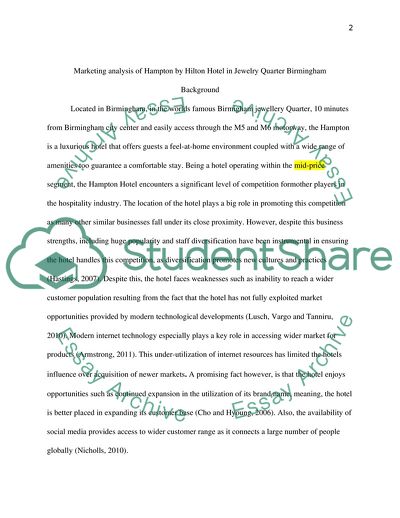Cite this document
(Marketing Analysis of Hampton by Hilton Hotel in Birmingham Report, n.d.)
Marketing Analysis of Hampton by Hilton Hotel in Birmingham Report. https://studentshare.org/tourism/1848850-marketing-analysis-of-hampton-by-hilton-hotel-in-jewelry-quarter-birmingham
Marketing Analysis of Hampton by Hilton Hotel in Birmingham Report. https://studentshare.org/tourism/1848850-marketing-analysis-of-hampton-by-hilton-hotel-in-jewelry-quarter-birmingham
(Marketing Analysis of Hampton by Hilton Hotel in Birmingham Report)
Marketing Analysis of Hampton by Hilton Hotel in Birmingham Report. https://studentshare.org/tourism/1848850-marketing-analysis-of-hampton-by-hilton-hotel-in-jewelry-quarter-birmingham.
Marketing Analysis of Hampton by Hilton Hotel in Birmingham Report. https://studentshare.org/tourism/1848850-marketing-analysis-of-hampton-by-hilton-hotel-in-jewelry-quarter-birmingham.
“Marketing Analysis of Hampton by Hilton Hotel in Birmingham Report”. https://studentshare.org/tourism/1848850-marketing-analysis-of-hampton-by-hilton-hotel-in-jewelry-quarter-birmingham.


